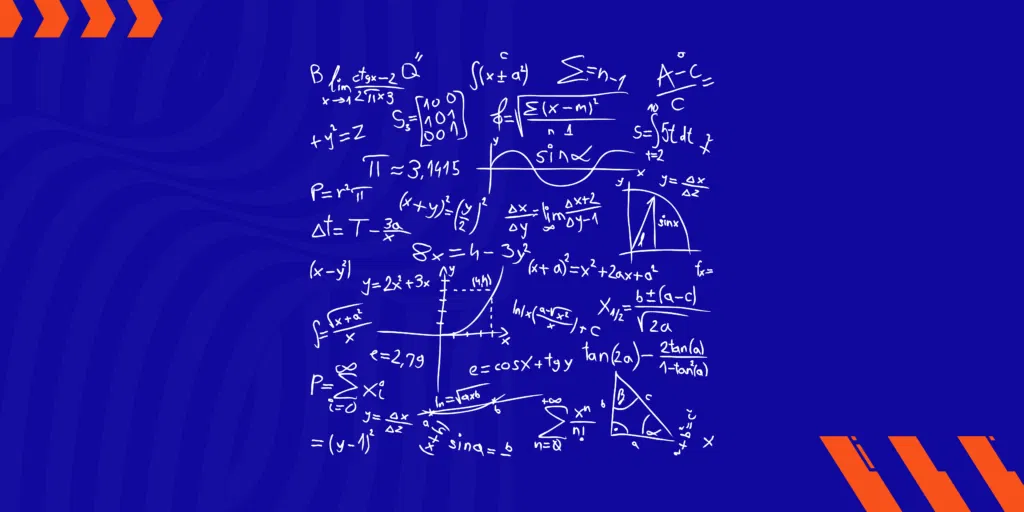
The GMAT Focus Edition’s Quantitative Reasoning section tests your ability to analyse data and solve mathematical problems in business contexts. This guide will help you understand what to expect and how to prepare effectively.
Overview of GMAT Quantitative Reasoning
Format
- Approximately 45 minutes
- Focus on business-relevant scenarios
- Computer-adaptive testing
- Mix of problem-solving and data sufficiency questions
Key Topics Covered
- Arithmetic
- Integers and properties
- Fractions and decimals
- Percentages
- Ratios and proportions
- Basic number properties
- Algebra
- Linear equations
- Quadratic expressions
- Functions and sequences
- Word problems
- Systems of equations
- Geometry
- Lines and angles
- Quadrilaterals and polygons
- Circles
- Area and perimeter
- Volume and surface area
- Data Analysis
- Statistics
- Probability
- Interpretation of data
- Graphs and charts
- Sets
Question Types

Problem Solving
- Traditional multiple-choice format
- Tests mathematical knowledge and application
- Requires calculation and analysis
- Often includes business scenarios
Data Sufficiency
- Unique to GMAT
- Tests logical reasoning
- Evaluates ability to determine what information is needed
- Requires understanding of mathematical concepts without full calculation
Strategies for Success
General Approach
- Read Carefully
- Understand what’s being asked
- Identify relevant information
- Note any constraints or conditions
- Manage Time
- Average about 2 minutes per question
- Know when to guess and move on
- Practice pacing strategies
- Use Process of Elimination
- Rule out obviously wrong answers
- Look for logical shortcuts
- Cross-check your work
Data Sufficiency Tips
- Memorize the Answer Choice Meanings
- Statement (1) alone is sufficient
- Statement (2) alone is sufficient
- Both statements together are sufficient
- Each statement alone is sufficient
- Statements together are not sufficient
- Follow a Systematic Approach
- Understand the question
- Evaluate Statement (1)
- Evaluate Statement (2)
- If needed, evaluate both together
- Choose the appropriate answer
Common Pitfalls to Avoid
- Calculation Errors
- Double-check your math
- Use estimation to verify reasonableness
- Watch for unit conversions
- Time Management Mistakes
- Spending too long on difficult questions
- Not checking work on easy questions
- Poor pacing throughout the section
- Misreading Questions
- Overlooking crucial details
- Misinterpreting data sufficiency format
- Making assumptions not stated in the question
Preparation Tips
These are some tips that you can use while preparing for the exam.
Study Approach
- Review Fundamentals
- Refresh basic math concepts
- Learn GMAT-specific strategies
- Practice with official materials
- Practice Regularly
- Set a consistent study schedule
- Use official GMAT practice questions
- Time yourself during practice
- Focus on Weak Areas
- Identify knowledge gaps
- Target specific question types
- Review missed questions thoroughly
Practice Strategies
- Use Official Materials
- GMAC practice questions
- Official GMAT Focus Edition guide
- Online practice tests
- Track Progress
- Keep an error log
- Monitor timing improvements
- Review patterns in missed questions
Test Day Tips

- Mental Preparation
- Get adequate rest
- Arrive early
- Stay calm and focused
- During the Test
- Read each question carefully
- Manage time consistently
- Use the provided notepad effectively
- Trust your preparation
Conclusion
Success in GMAT Quantitative Reasoning requires a combination of mathematical knowledge, strategic thinking, and practiced execution. Focus on:
- Understanding fundamental concepts
- Developing strong problem-solving strategies
- Regular, focused practice
- Time management skills
- Maintaining accuracy under pressure
Remember that the GMAT Focus Edition emphasises business applications, so practice applying mathematical concepts to real-world scenarios. With proper preparation and a strategic approach, you can improve your performance in this crucial section of the GMAT.
